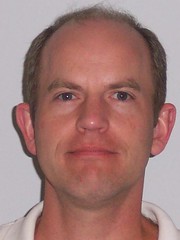Energy Storage
 [
[Renewable Energy’s Missing Link
On Wednesday, April 11, 2007, I attended The MIT Club of Northern California Clean Technology Program event titled Energy Storage – The Missing Link.
First, the website for the 2007 California Clean Tech Open (CCTO) should go live with details on the 2007 competition Monday, April 16, 2007. This was per a representative from Wilson Sonsini Goodrich & Rosati. This year’s competition will add a
The speakers at this Energy Storage event had a large centralized power plant focus. Since PG&E Corporation (NYSE:PCG) co-sponsored the event, at least one speaker should have presented small scale, distributed energy solutions for balance.

This key slide from the http://www.electricitystorage.org/
Research Program Manager for the California Energy Commission, discussed the Energy Systems Integration area of the PIER (Public Interest Energy Research) program. Mr. Gravely directs over $60 million in energy research projects with a focus on technologies near or ready for commercialization including energy storage. Check the PIER site for new program funding solicitations and deadlines.

Ausra, Inc., pitched a storage angle on the CSP (Concentrating Solar Power) technology Ausra is developing. CSP uses the sun to heat water driving steam turbines to produce electric power at market competitive prices. Dr. Mills envisions thermal storage of heated water and steam for time delayed use by turbines with high thermal storage efficiency. Dr. Mills moved his company from
Upcoming electrical energy storage industry events in the
As usual, Leah Krauss, UPI Energy Correspondent, has chimed in with a contemporary article on the energy storage subject pertinent to photovoltaics in Solar World: Storage is key.
Labels: Ausra, Energy Storage, EPRI, PGE









1 Comments:
Thanks Ed for profiling our event. As an FYI though - the MITCNC's sponsors have no influence over the topic of our panels or who we invite to our panels, so it was not up to PG&E to try to "balance" the panel - the MITCNC Clean Tech Program wanted to focus on utility-scale storage. We may have another event on smaller-scale storage later on down the line, so if you have any speakers you might recommend, please let us know!
Post a Comment
<< Home